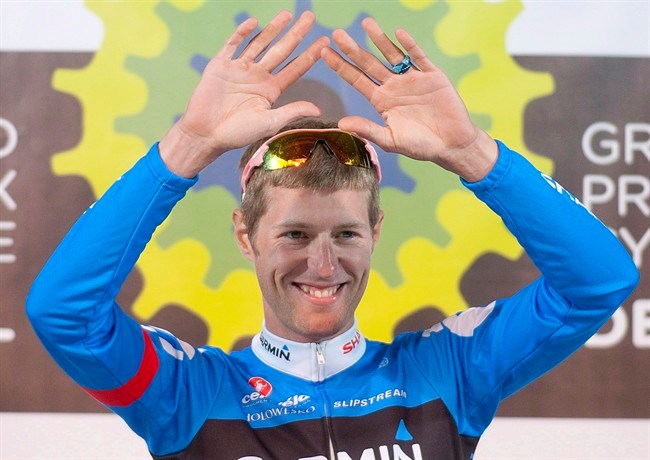Victoria cycling star Ryder Hesjedal has admitted to doping in the past, saying he “chose the wrong path."
“Even though those mistakes happened more than 10 years ago, and they were short-lived, it does not change the fact that I made them,” he said in a statement Wednesday.
Because of that, he has gone almost overnight from Victoria cycling icon to a Ryder on the storm.
“I sincerely apologize for my part in the dark past of the sport. I will always be sorry,” he said.
Hesjedal said he “stopped what I was doing many years before” joining his current pro team, Garmin-Sharp.
“Over a year ago, when I was contacted by anti-doping authorities, I was open and honest about my past,” said the 32-year-old Hesjedal.
“I have seen the best and the worst of the sport, and I believe that it is now in the best place it’s ever been.
“I look at young [pro] riders and I know the future of the sport has arrived. I’m glad they didn’t have to make the same choices I did.”
Colorado-based Garmin-Sharp, known for its strident anti-doping stance, said it is standing by Hesjedal.
“A year ago when [Hesjedal] was contacted, he co-operated fully and truthfully testified to the USADA [U.S. Anti-Doping Agency] and CCES [Canadian Centre for Ethics in Sport]. For this reason, we support him,” said the team in a statement.
Hesjedal issued his statement and apology after an excerpt was published from an upcoming book, Yellow Fever.
He did not provide any details about his drug use.
The book’s author is Michael Rasmussen, a Danish pro cyclist who has admitted to taking performance-enhancing drugs and is under a two-year suspension.
In excerpts published in a Danish newspaper, Rasmussen said the Colwood-raised Hesjedal received doping advice from him, including about the performance-enhancing drug EPO, in 2003, one year before the Athens Summer Olympics.
Hesjedal was the world championship silver-medallist mountain biker in 2003. He switched to road racing in 2005 and established major Canadian cycling breakthroughs by winning the 2012 Giro d’Italia and placing sixth in the 2010 Tour de France.
Also implicated in the Rasmussen book, according to the excerpts, are Canadian mountain bikers Seamus McGrath and Chris Sheppard. McGrath is a two-time Olympian who won the silver medal at the 2002 Manchester Commonwealth Games. Rasmussen said he did not see Hesjedal or the other Canadians take any banned substances.
McGrath now manages the annual Ryder Hesjedal’s Tour de Victoria mass participation event. Last month, Hesjedal rode with the pack of nearly 2,000 cyclists in the third annual ride. McGrath did not return calls.
Organizers of Ryder Hesjedal’s Tour de Victoria were firm in their support of their event’s namesake.
“We stand behind Ryder and continue to be proud of his achievements and his promotion of cycling in Canada,” said Tour de Victoria spokeswoman Kim Van Bruggen.
The World Anti Doping Agency’s statute of limitations is eight years, which means Hesjedal is not facing a ban or suspension for what happened in 2003.
Victoria lawyer Peter Lawless, a Canadian Olympic Committee director, is working on a proposal to bring to the Canadian Centre for Ethics in Sport that advocates establishing legislation that would have the power to go after those who “facilitate doping.”
“The athlete is the last person in the chain and they are the ones who get tagged,” said Lawless, an award-winning coach in Paralympic sport.
“A story like this is never good. But it provides an opportunity. It was a dark time [that period in cycling]. Any time you can shed a bright light in a dark place, good things happen.”
Despite the eight-year statute of limitations, Christine Ayotte, director of World Anti-Doping Agency’s accredited lab in Laval, Que., said Hesjedal still deserves to be punished.
“It’s just like the Lance Armstrong or Tyler Hamilton cases — it seems carefully designed to touch on a period beyond the eight-year range of the world anti-doping code,” she said.
“But in some cases, exceptions were made. That’s the case with Lance Armstrong. The USADA [U.S. Anti-Doping Agency] went back farther than eight years by relying on legal arguments that, in my opinion, seemed to hold up well.”
She said she doesn’t know whether similar punishment could befall Hesjedal.
cdheensaw@timescolonist.com
— With The Canadian Press



